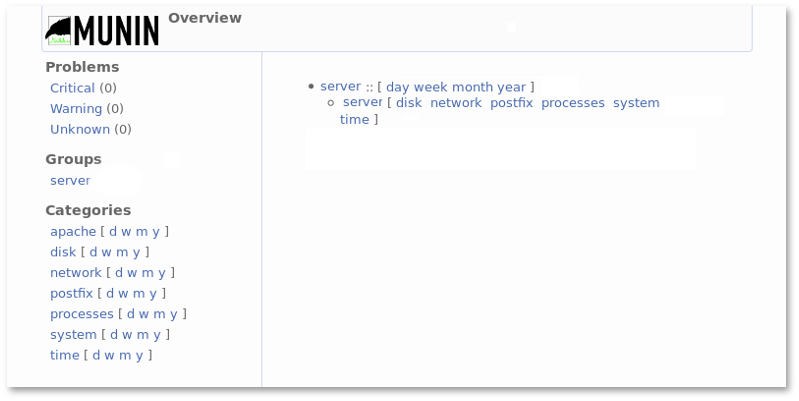How to install Munin on Ubuntu and CentOS
Munin is a free monitoring system. It allows you to collect data from multiple servers simultaneously and display everything in clear and intuitive graphs. It has modular architecture, and works based on the “Master-Node” principle. It uses RRDtool to create graphs that are accessible via the web interface.
The munin package is responsible for gathering information from the munin-node and generating the necessary graphs. It is installed only on the computer where the reports will be viewed.
The munin-node package is a munin server, which is used to collect the necessary information from the system components and transfers it to the munin server.
Installing and configuring the munin server
Munin is installed running the following command:
CentOS:
sudo yum install munin munin-node rrdtoolUbuntu:
sudo apt-get install munin munin-node rrdtoolBy default, Munin creates an Apache configuration file in
CentOS: /etc/httpd/conf.d/munin.conf
Ubuntu: /etc/munin/apache.conf (simlink /etc/apache2/conf.d/munin)
Add the following line in CentOS
/etc/httpd/conf.d/munin.conf:
Alias /munin /var/www/html/muninThen change /etc/munin/munin.conf
Uncomment the lines:
/etc/munin/munin.conf:
[...]
dbdir /var/lib/munin
htmldir /var/www/html/munin/ #CentOS
htmldir /var/cache/munin/www #Ubuntu
logdir /var/log/munin
rundir /var/run/munin
[...]
[your_server_name]
address 127.0.0.1
use_node_name yes
[...]Then the client machine(s) are added. To do it, add the following line to the same file:
[client2]
address 192.X.Х.ХSet the necessary rights to Munin, running the command:
CentOS:
chown -R munin:munin /var/www/html/munin/Ubuntu:
chown -R munin:munin /var/cache/munin/wwwInstalling and configuring the munin client
CentOS:
sudo yum install munin-node rrdtoolUbuntu:
sudo apt-get install munin-node rrdtoolIndicate the client machine’s name in the configuration file /etc/munin/munin-node.conf
#host_name localhost.localdomain host_name client2Next, you must allow access from the server to the client machines. To do this, you must specify the IP address of the server. In this block, you can specify several servers at once.
Afterwards, restart the Munin client:
/etc/init.d/munin-node restartConfiguring authorization in the web interface
After having connected to the server, it is necessary to bring the configuration file munin.conf to the following form:
CentOS:
/etc/httpd/conf.d/munin.conf:
<directory /var/www/html/munin>
AuthUserFile /etc/munin/munin-htpasswd
AuthName "Munin"
AuthType Basic
require valid-user
ExpiresActive On
ExpiresDefault M310
</directory>
ScriptAlias /munin-cgi/munin-cgi-graph /var/www/cgi-bin/munin-cgi-graphUbuntu:
/etc/munin/apache.conf:
<Directory /var/cache/munin/www>
Order allow,deny
Allow all
Options None
AuthUserFile /etc/munin/munin-htpasswd
AuthName "Munin"
AuthType Basic
require valid-user
<IfModule mod_expires.c>
ExpiresActive On
ExpiresDefault M310
</IfModule>
</Directory>Running Munin
First, you need to connect to the server, and then run the following commands:
CentOS:
sudo /etc/init.d/munin-node startUbuntu:
sudo initctl start munin-nodeIn order for the application to start automatically after the server is turned on, you must run the following command:
CentOS:
sudo chkconfig munin-node onUbuntu:
sudo update-rc.d munin-node defaultsThen update the web-server configuration files:
CentOS:
sudo service httpd reloadUbuntu:
sudo service apache2 reloadTo check performance, go to the following address http://yourservername/munin/

In the window that opens, choose the required server and graph:

Running Munin
Only a few monitoring plugins are active by default. There are many other plugins available and, if necessary, you can add them by creating a symbolic link to the plugin.
A complete list can be found in the directory /usr/share/munin/plugins/
ln -s /usr/share/munin/plugins/apache_servers /etc/munin/plugins/Restart the munin-node service in your munin client
sudo service munin-node restart